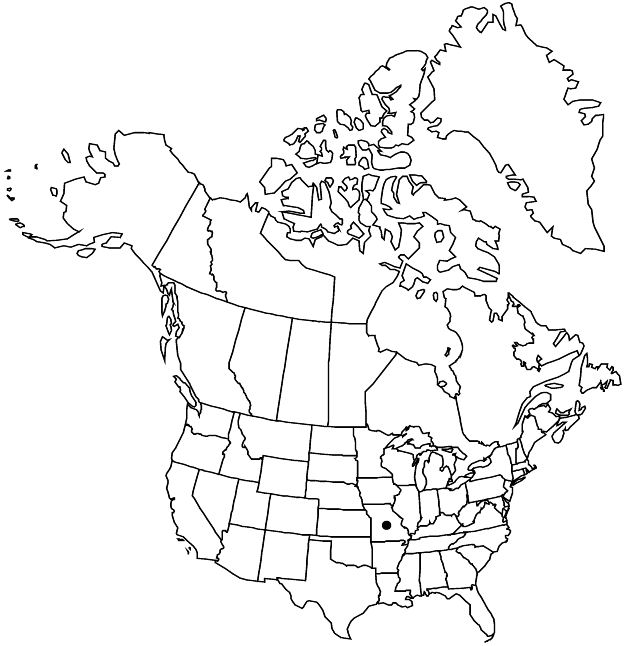Crataegus collina var. sordida
Rhodora 10: 76. 1908.
Leaf-blades ± obtrullate, 3.5–5 cm, 1/2 grown at anthesis, length/width = 1.4–1.5, subcoriaceous, lobes 0 or 1–3 per side, max LII 15%, lobe apex acute, margins serrate distally, teeth 1.5 mm, apex subacute to acute, adaxial surface matte to sublustrous young, with short, scattered, caducous hairs. Inflorescence branches sparsely pubescent. Flowers 15 (–20) mm diam.; stamens 20, anthers rose.
Phenology: Flowering Apr; fruiting Sep–Nov.
Habitat: Brush, open woodlands
Elevation: 100–200 m
Discussion
Of conservation concern.
Variety sordida is rare in southern Missouri.
B. F. Bush noted on a herbarium label that var. sordida flowered later and had larger flowers than sympatric Crataegus collina, assumed to be var. collina. The bracteoles of var. sordida are particularly narrow (20:1). Variety sordida has not been recorded since the early 1900s.
Selected References
None.
Lower Taxa
"thin" is not a number."short" is not a number."pubescent" is not a number."adnate" is not a number."dm" is not declared as a valid unit of measurement for this property.
